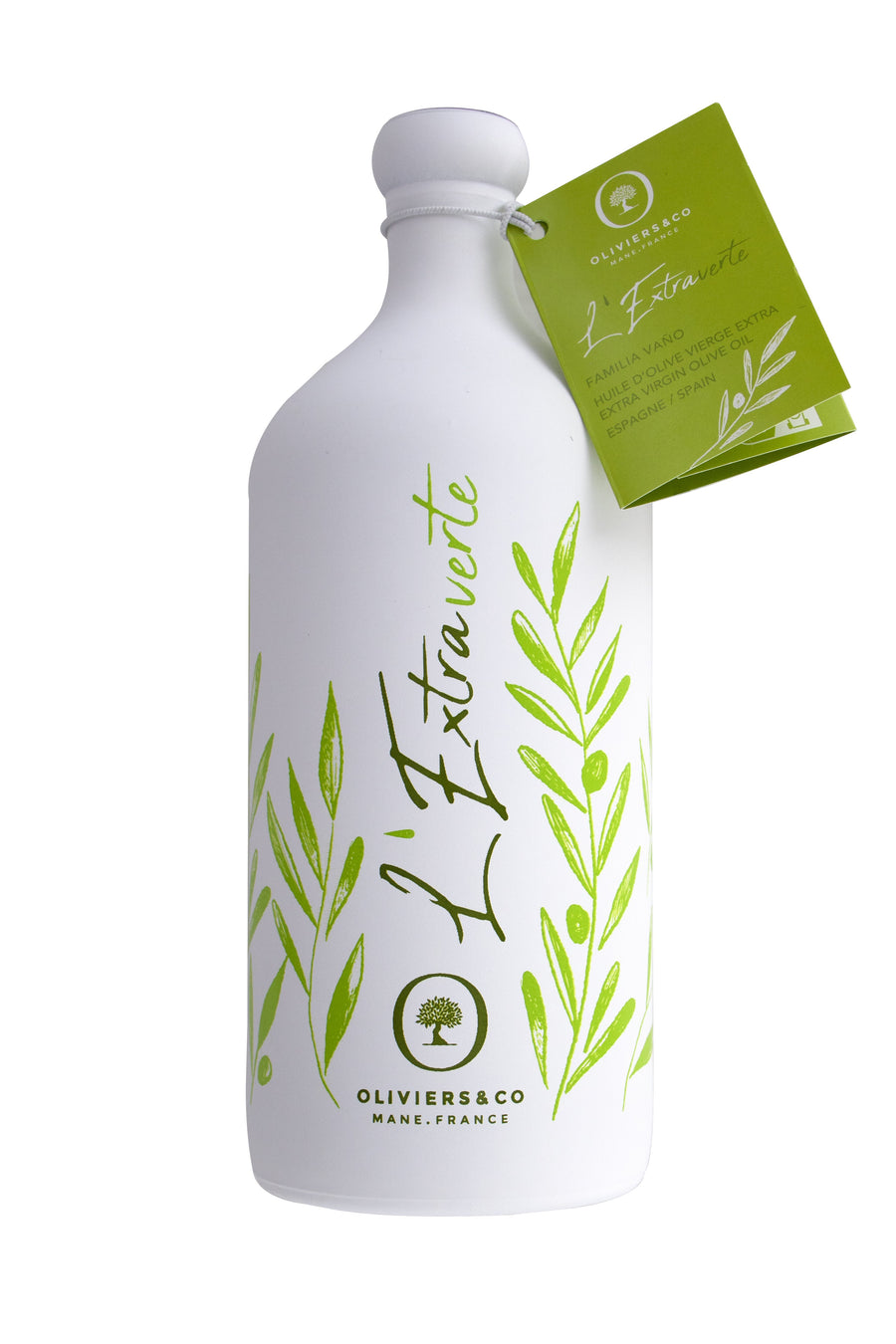OLIVE OIL TASTING: HOW TO DO IT?

Tasting olive oil is an art that reveals the richness and complexity of this noble product. At Oliviers&Co, we believe that understanding the nuances of olive oil is essential to fully appreciate its qualities. But how do you taste like a true expert?
In this article, we’ll walk you through the key steps to hone your taste buds and discover the subtleties of each vintage. You’ll learn how to evaluate aromas, flavors, and textures, while also mastering techniques that will allow you to distinguish quality olive oils. Whether you’re a seasoned connoisseur or a curious beginner, our guide will give you the tools you need to make every tasting an unforgettable experience.
RESTRICTION OF TASTE AND STRENGTH OF SMELL
The first step to mastering olive oil tasting is understanding the role our senses play in flavor perception. Our taste experience is based on the interaction of taste and smell. The receptors on our tongue can only distinguish five basic tastes: sweet, salty, sour, bitter, and umami. The richness of the flavors we perceive comes primarily from our sense of smell, especially through retronasal sensations, where we perceive aromas through the back of our nose while food is in our mouths.
To illustrate, imagine that when you have a cold, your sense of taste is reduced: with a blocked nose, you lose many nuances of taste, as the sense of smell is essential for fully perceiving the aromas and subtleties of food. This interaction between the senses of taste and smell is essential for enjoying all the nuances of olive oil.
FLAVOR PROFILE: TYPES OF OLIVE OIL
Olive oil is characterized by a complex palette of flavors, from sweet and delicate to fruity, bitter or spicy. Each oil has unique characteristics that reflect the terroir and know-how of its producer. At Oliviers&Co, we believe that all quality olive oils can be divided into two broad flavor profiles, each offering a different sensory experience.
- Vegetable oils : tend to be characterized by vegetal notes, such as fresh grass, artichoke, tomato leaves or green apple.
- Floral oils : they leave a soft, velvety impression of lightness, reminiscent of almonds and milk, but also mixed with fruity notes of citrus, fruit, pears and hazelnuts.
When it comes to comparing it to wine, a “vegetable” oil behaves like a young, vibrant, warm red wine, while a “floral” oil evokes the sweetness and softness of a white wine.
Oliviers&Co olive oil collection : each year, depending on the harvest, our oils are classified as vegetal or floral. You will find these flavor profiles marked on each bottle, with the option to filter your selection from vegetal intensity (very pronounced) to floral sweetness (subtle). In stores, the oils are also labeled as “vegetal” or “floral”.
TASTING - NOSE
There are over 1,000 varieties of olives grown around the world, offering an incredible variety of flavors.
In our Oliviers&Co collection, we have highlighted the most common notes that enrich each flavor profile and give our oils a unique personality. Discover how these distinctive nuances give depth and originality to each of our oils .
TASTING - TASTING CELLS
When tasting olive oil, we focus on specific positive qualities of the oil in each step. After assessing the fruity aroma by inhaling from the glass while holding the oil in our mouth, we further assess the retronasal aroma and determine the amount of bitterness on the tongue. Finally, we determine the intensity of the pungency of the oil in our throat when we swallow it.
Here are a number of definitions we use to further classify oils in terms of flavor profile on the palate. We believe it is important to put flavor perception into context and suggest food pairings and oil uses to further help you choose the perfect oil for all your culinary preferences. In general, our recommendations are based on the final finish in terms of sweetness, balance, and intensity:
- Mild olive oils : tend to be buttery, smooth, delicate and light; they go great with light or delicate dishes such as fish, soups, vegetables, pesto, eggs and potatoes.
- Balanced olive oils : These are a bit more robust, generally have a more herbaceous and complex flavor profile. These oils have a peppery note and are excellent with steaks, bruschetta, tomato sauces, pasta and any dish where you want to cut through and enliven the flavors already present.
- Strong olive oils : Strong oils made from olives picked mostly green tend to have a more pronounced, peppery flavor, usually with notes of green vine tomatoes, green tomato leaves, and green apple skins.
These fruitier and tastier oils can be used to prepare more aromatic and robust red meat and tomato sauce dishes, hearty stews, as well as steamed vegetables and salads.
You can find our range of extra virgin olive oils here.
CONDITION
BITTER : considered a positive characteristic because it indicates fresh olives
BUTTER : smooth, creamy taste in the mouth
FRESH : good aroma, fruity, unoxidized
HARMONIC : balance between the properties of the oil, without any of them dominating the others.
PEPPER : a tingling sensation in the throat that can trigger a cough
ROUND : balanced, nourishing sensation of harmonious taste.
SPICY : the smell/taste of spices, such as cinnamon and allspice.
What is the best olive oil? ⭐️
We get this question every day. There is no single answer.
First of all, the best olive oil must be extra virgin, but what exactly does extra virgin mean?
In order for olive oil to be labeled as "extra virgin", it must meet a number of conditions, the most well-known of which are: cold pressing (maximum 26 degrees) within 24 hours after harvest, mechanical pressing, acidity of maximum 0.8%, otherwise this olive oil will be considered "virgin" -> from 0.8 to 2%.
For example, at Oliviers & Co Prague, all of our olive oils are extra virgin and have an acidity of less than 0.3%, so we can guarantee you the best quality.
But what does the acidity of olive oil mean?
The lower the acidity, the fresher the extra virgin olive oil, which is an indicator of quality.
If your olive oil already meets these main principles, you can consider it the best olive oil.
Furthermore, we have (just like wine) aromatic profiles: strong, floral, herbal, soft, delicate, etc. We know this and discover it when tasting olive oil. Everything can change depending on the harvest date (generally speaking, the earlier the olives are harvested, the more intense the oil will be), but not only that! The olive variety, the land, the soil, the sunshine and the climatic conditions make the difference!
In conclusion, the best olive oil does not necessarily come from Italy, Greece or Spain. The best olive oil is the one that is transparent in all its properties and, above all, pleases your taste buds! So, embark on the journey to find your best olive oil!
If you want to learn more, we organize an olive oil tasting once a month to understand together all the subtleties of this golden treasure. We will help you choose the best olive oil, or maybe YOUR best olive oils! You can find all the dates on our website, where you can also register. Be careful, places fill up quickly!
Watch the video from our event: here
We look forward to seeing you at Oliviers & Co - Prague
Lucie & Bertrand 👩🍳🧑🍳






